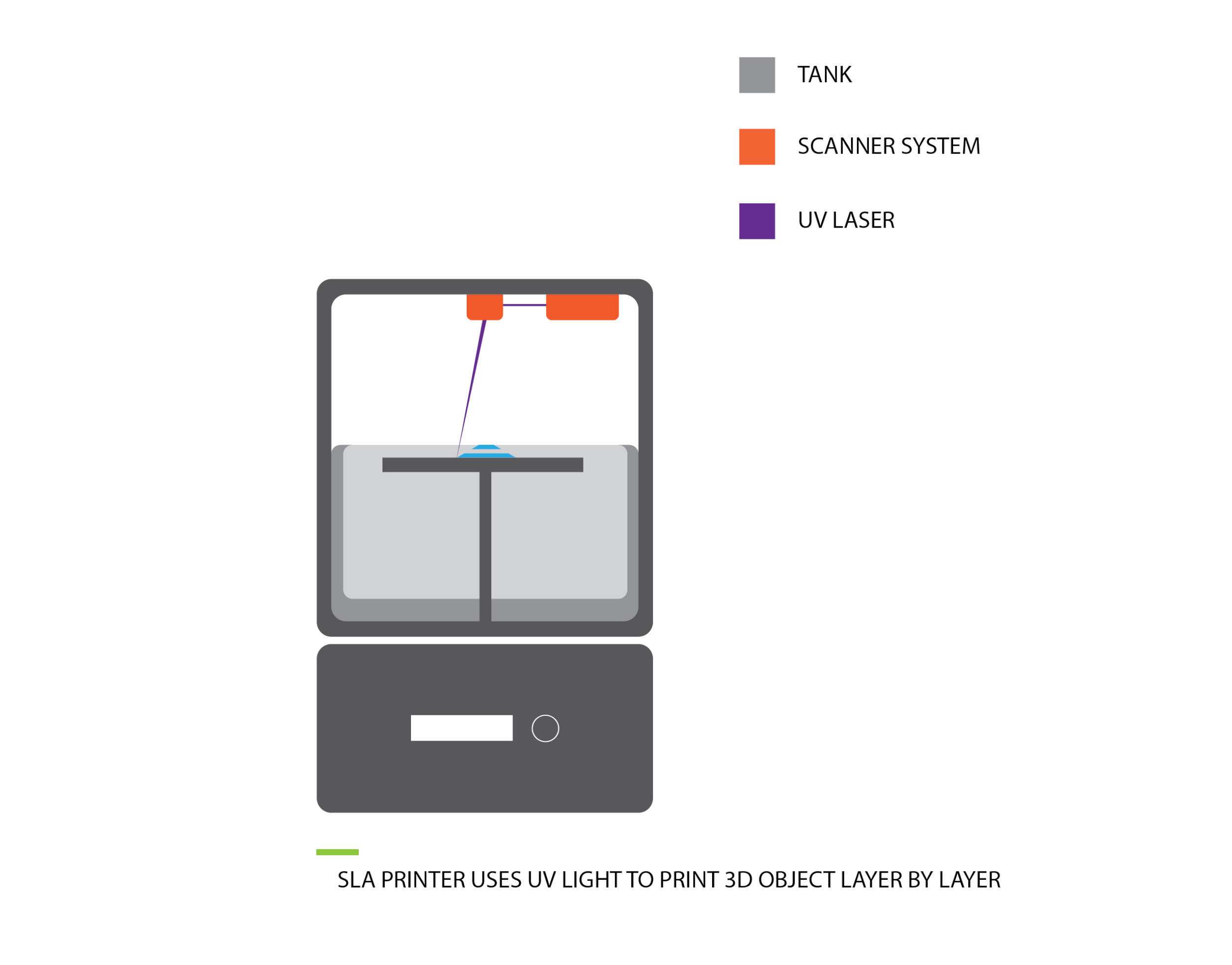The first steps of SLA printing. (Source: Cyant)
StereoLithography Apparatus (SLA) is an additive manufacturing process and an example of a 3D printing method. This technology uses an ultraviolet (UV) laser to turn light-sensitive resin (a liquid material that becomes hard when ultraviolet light is shined on it) into solid 3D objects, layer by layer.
Example of a tank for the resin from the Formlabs Form 2. (Source: http://bit.ly/2vWlDVN
SLA 3D printers need three main parts to do this; a tank filled with resin, a
platform that is lowered into this tank and the UV laser, which is controlled by a scanning system. In the first stage of SLA 3D printing, the platform is lowered into the resin by a small amount, where the UV laser then draws out a pattern. This pattern hardens instantly creating the first layer.
How the SLA Printing Process works. (Source: Cyant)
Next, the platform is further lowered into the resin by another small amount, where the UV laser draws a similar pattern that joins the first layer. This layering process happens again and again until a full 3D object is formed.
Final steps of SLA printing. (Source: Cyant)
Once fully formed, the 3D object, along with its ‘supports’, are removed from the tank and are washed in a solution (a special chemical liquid) to remove excess resin. After being washed, the 3D object is placed in a UV oven where it is further hardened.
SLA 3D printed flexible tire on ‘supports’. (Source:http://bit.ly/2wyIvN4)
Much like Fused Deposit Modeling (read more about FDM in the Lexicon), ‘supports’ are printed along with the 3D objects to make sure overhanging parts are supported against gravity while being printed. Once the full 3D object is completely hardened, the ‘supports’ are removed.





